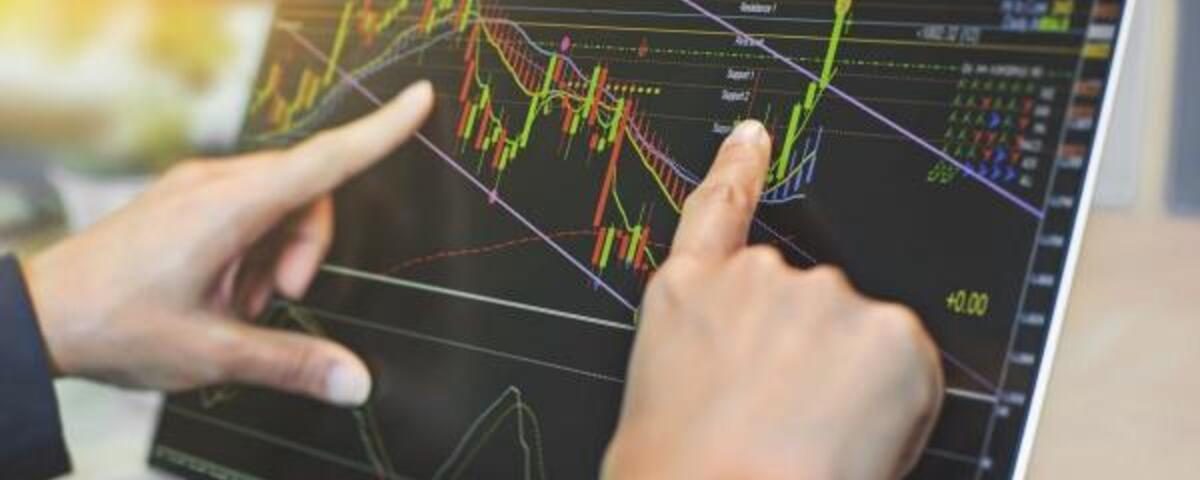
Position Trading in Forex: A Comprehensive Guide
15/07/2024
Forex Trading for a Living: A Comprehensive Guide
15/07/2024Understanding Forex Volatility: A Comprehensive Guide
Introduction to Forex Volatility
Forex volatility refers to the frequency and extent of price movements in the foreign exchange market. It is a critical concept for traders because it directly impacts trading strategies, risk management, and profit potential. Volatile markets can present significant opportunities for profit but also carry substantial risks. This comprehensive guide will explore what Forex volatility is, how it is measured, its causes, and how traders can manage and capitalize on it effectively.

What is Forex Volatility?
Volatility in the Forex market is a measure of how much the price of a currency pair fluctuates over a given period. High volatility means significant price swings, while low volatility indicates more stable prices. Understanding and analyzing volatility helps traders make informed decisions, set appropriate risk management strategies, and identify potential trading opportunities.
Types of Volatility
- Historical Volatility: This measures past price fluctuations over a specific period and provides an idea of how volatile a currency pair has been historically.
- Implied Volatility: This represents the market’s expectations of future volatility, often derived from options pricing. It indicates the market’s view on how much the price is likely to move over a certain period.
Measuring Forex Volatility
Several tools and indicators help measure Forex volatility, providing insights into market conditions and aiding in strategy development.
1. Average True Range (ATR)
The Average True Range (ATR) is a popular volatility indicator that measures the average range between the high and low prices over a specified period. A higher ATR indicates higher volatility, while a lower ATR suggests lower volatility.
Calculation
ATR is calculated using the following steps:
- Determine the True Range (TR) for each period:
- TR = max(high – low, abs(high – close previous), abs(low – close previous))
- Calculate the ATR as a moving average of the True Range over a specified number of periods.
2. Bollinger Bands
Bollinger Bands consist of a moving average and two standard deviation lines plotted above and below the moving average. They help identify volatility by showing how much prices deviate from the average.
Interpretation
- Wide Bands: Indicate high volatility as prices move further from the moving average.
- Narrow Bands: Indicate low volatility as prices stay closer to the moving average.
3. Standard Deviation
Standard deviation measures the dispersion of prices from the mean. A higher standard deviation indicates greater volatility, while a lower standard deviation indicates less volatility.
Calculation
Standard deviation is calculated by taking the square root of the average squared deviations from the mean price over a specified period.
4. Volatility Index (VIX)
The Volatility Index (VIX), also known as the “fear gauge,” measures market expectations of volatility. Although primarily used for stock markets, it provides valuable insights into overall market sentiment, which can impact Forex volatility.
Causes of Forex Volatility
Several factors contribute to Forex volatility, each affecting currency prices to varying degrees. Understanding these factors helps traders anticipate market movements and adjust their strategies accordingly.
1. Economic Data Releases
Economic data releases, such as GDP, employment figures, and inflation rates, can cause significant volatility. Positive or negative surprises in these data can lead to sharp price movements as traders adjust their expectations.
2. Central Bank Policies
Central banks play a crucial role in influencing currency values through interest rate decisions, monetary policy statements, and interventions. Changes in interest rates or unexpected policy shifts can lead to increased volatility.
3. Geopolitical Events
Geopolitical events, including elections, political instability, and conflicts, can cause substantial volatility as they impact investor confidence and economic stability.
4. Market Sentiment
Market sentiment, driven by trader emotions and perceptions, can lead to volatile price movements. Factors such as risk appetite, fear, and greed can cause rapid price swings.
5. Liquidity
Liquidity refers to the ease with which an asset can be bought or sold without affecting its price. Lower liquidity often leads to higher volatility, especially during off-peak trading hours or in less traded currency pairs.
Managing Forex Volatility
Managing volatility is crucial for successful trading. Traders need to employ various strategies to mitigate risks and capitalize on volatile market conditions.
1. Risk Management
Effective risk management is essential in volatile markets. Traders should set stop-loss orders to limit potential losses and use appropriate position sizing to manage risk exposure.
2. Diversification
Diversifying trading strategies and currency pairs can help spread risk and reduce the impact of volatility on the overall portfolio.
3. Hedging
Hedging involves taking offsetting positions in correlated currency pairs or financial instruments to reduce risk. This strategy helps protect against adverse price movements during periods of high volatility.
4. Volatility-Based Strategies
Developing strategies specifically designed for volatile markets can help traders take advantage of rapid price movements. Examples include breakout trading, trend following, and mean reversion strategies.
Breakout Trading
Breakout trading involves identifying key support and resistance levels and entering trades when prices break through these levels. Volatile markets often provide more opportunities for breakouts.
Trend Following
Trend following strategies involve trading in the direction of the prevailing trend. High volatility can result in stronger and more sustained trends, offering potential for significant gains.
Mean Reversion
Mean reversion strategies assume that prices will revert to their mean after extreme movements. In volatile markets, prices often swing widely, providing opportunities for mean reversion trades.
Utilizing Volatility in Trading Strategies
Understanding and utilizing volatility can enhance trading strategies and improve overall performance. Traders can incorporate volatility indicators and tools into their strategies to better navigate market conditions.
1. Incorporating ATR in Stop-Loss Placement
Using ATR to set stop-loss levels can help accommodate market volatility and avoid premature exits. By setting stop-loss orders based on the average true range, traders can better manage risk and avoid getting stopped out by normal price fluctuations.
2. Bollinger Bands for Identifying Volatility
Bollinger Bands can help traders identify periods of high and low volatility. When bands widen, it signals increased volatility, while narrowing bands indicate decreased volatility. Traders can use this information to adjust their strategies accordingly.
3. Standard Deviation for Volatility Analysis
Standard deviation can be used to gauge market volatility and adjust trading strategies. Higher standard deviations suggest greater volatility, prompting traders to be more cautious or to capitalize on rapid price movements.
4. VIX for Market Sentiment
Although the VIX is primarily used for stock markets, it provides insights into overall market sentiment, which can impact Forex volatility. A rising VIX indicates increased fear and potential for higher volatility in currency markets.
Case Studies: Understanding Forex Volatility in Action
Case Study 1: Economic Data Release
On a typical trading day, the US Non-Farm Payrolls (NFP) report is released. This report significantly impacts the USD pairs. Suppose the actual NFP numbers are much higher than expected. In this case, the USD could experience a rapid appreciation due to increased confidence in the US economy, leading to heightened volatility across USD pairs.
Case Study 2: Central Bank Policy Shift
The European Central Bank (ECB) unexpectedly announces a change in interest rates, lowering them to stimulate the economy. This unexpected move causes the EUR to depreciate rapidly, resulting in significant volatility in EUR pairs as traders adjust their positions based on the new interest rate environment.
Case Study 3: Geopolitical Event
A sudden escalation in geopolitical tensions in the Middle East leads to a sharp increase in oil prices. Currencies of oil-exporting countries, such as the CAD, experience heightened volatility as traders react to the potential economic impact of higher oil prices.
Best Practices for Trading in Volatile Markets
1. Stay Informed
Staying updated on economic events, central bank policies, and geopolitical developments is crucial for anticipating volatility. Regularly check economic calendars, news feeds, and market analysis to stay informed about potential market-moving events.
2. Use Technical and Fundamental Analysis
Combining technical and fundamental analysis helps traders make well-informed decisions. Technical analysis provides insights into price patterns and trends, while fundamental analysis offers a broader perspective on economic and geopolitical factors.
3. Adjust Position Sizes
In volatile markets, adjusting position sizes can help manage risk. Smaller position sizes reduce exposure to significant price swings, helping protect capital during periods of high volatility.
4. Implement Tight Stop-Losses
Using tight stop-loss orders can help protect against significant losses during volatile market conditions. Ensure that stop-loss levels are set based on volatility indicators, such as ATR, to accommodate normal price fluctuations.
5. Avoid Overtrading
Volatile markets can tempt traders to overtrade in pursuit of quick profits. Overtrading increases transaction costs and exposure to risk. Stick to your trading plan and avoid making impulsive decisions based on short-term market movements.
Conclusion
Understanding Forex volatility is essential for successful trading in the foreign exchange market. Volatility presents both opportunities and risks, requiring traders to adopt effective strategies and risk management techniques. By using volatility indicators, staying informed about market developments, and employing volatility-based strategies, traders can navigate volatile markets more effectively and enhance their trading performance. Whether you are a beginner or an experienced trader, mastering the concept of Forex volatility will help you make informed decisions, manage risk, and capitalize on market opportunities.



